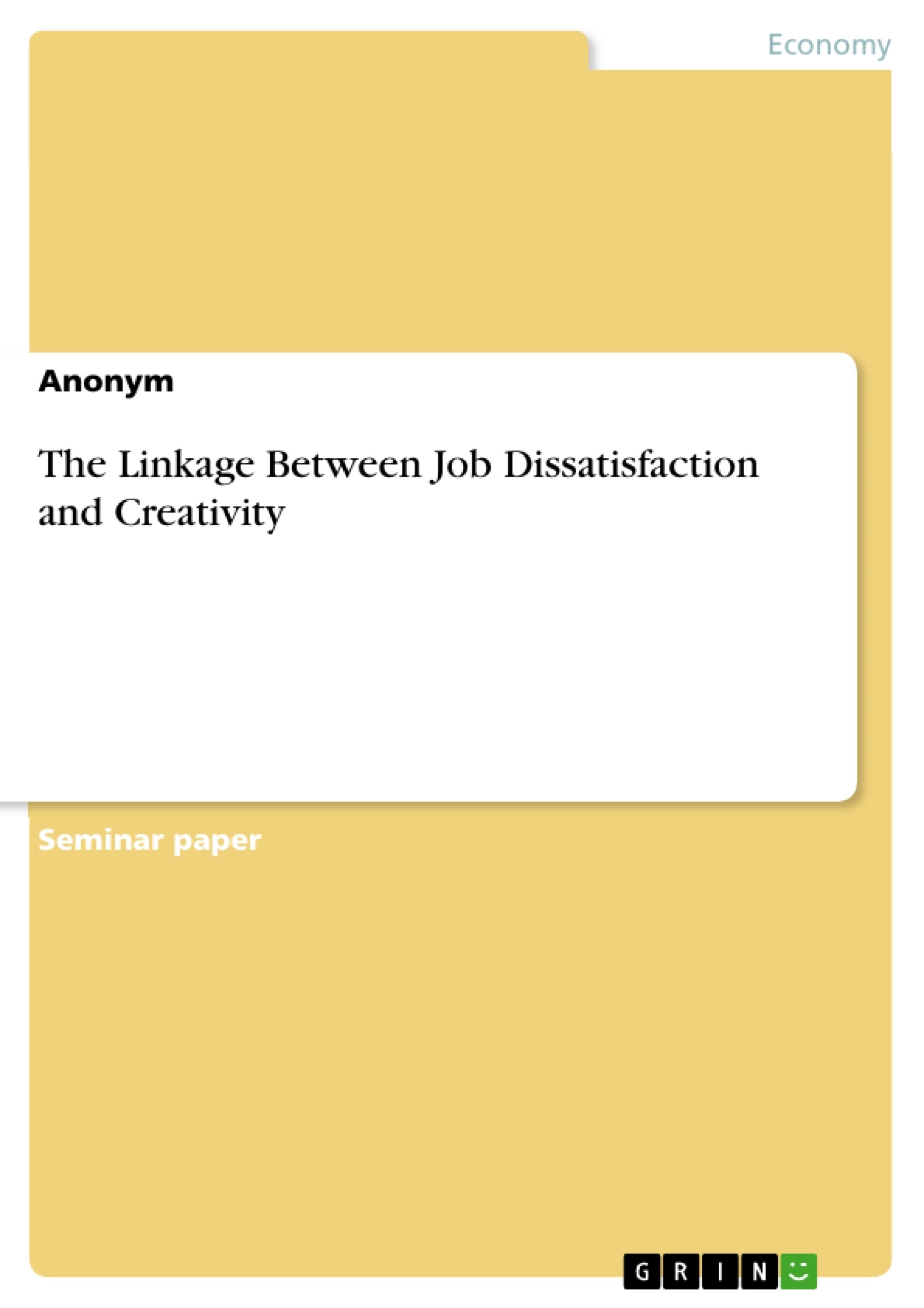This work reviews the key job-related factors leading to dissatisfaction and its impact on the employee behaviour.
It discusses the four reactions model in which employees respond to dissatisfying situation in the workplace. It also reviews the nature of creativity and its antecedents as well as the characteristics of the creative employees. The conditions under which dissatisfaction can be channelled into creativity will be explored as the core part of this work. In the last chapter, this work discusses the role of leaders´ behaviours and emotional intelligenceas an important part of the process to influence their followers and channel their endeavors for creativity.
Inhaltsverzeichnis (Table of Contents)
- 1. Introduction
- 1.1. Problem Description
- 1.2. Scope of Work
- 2. Key Drivers of Job-Related Dissatisfaction
- 2.1. Work-Related Stress
- 2.2. Conflict
- 2.3. Discrimination
- 2.4. Abusive Supervision
- 3. Reactions to Job dissatisfaction (EVLN)
- 3.1. Exit
- 3.2. Voice
- 3.3. Loyalty
- 3.4. Neglect
- 4. Creativity in the Workplace
- 5. Conditions under which Job Dissatisfaction Could Result in Creativity
- 5.1. Continuance Commitment
- 5.2. Useful Feedback from Co-Workers
- 5.3. Help and Support from Co-Workers
- 5.4. Perceived Organizational Support for Creativity
- 6. The Role of Leaders Behaviour and Emotional Intelligence
- 6.1. Leaders Behaviour
- 6.2. Leaders Emotional Intelligence
- 6.2.1. Identification of Opportunities for Creativity
- 6.2.2. Idea Generation
- 6.2.3. Idea Evaluation and Modification
- 6.2.4. Idea Implementation
- 7. Conclusion
Zielsetzung und Themenschwerpunkte (Objectives and Key Themes)
This work aims to explore the relationship between job dissatisfaction and creativity, investigating whether job dissatisfaction can have a positive impact on employee creativity. It analyzes key drivers of job-related dissatisfaction and explores how employees react to these dissatisfying situations. Furthermore, the work examines the conditions under which dissatisfaction can be channeled into creativity and explores the role of leaders' behaviors and emotional intelligence in fostering this process.
- Key Drivers of Job Dissatisfaction
- Employee Reactions to Job Dissatisfaction
- Conditions for Channeling Dissatisfaction into Creativity
- The Role of Leaders in Fostering Creativity
- Impact of Job Dissatisfaction on Employee Creativity
Zusammenfassung der Kapitel (Chapter Summaries)
The first chapter introduces the concept of job satisfaction and its connection to person-organization fit. It highlights the potential negative impact of job dissatisfaction on employee creativity and organizational performance. The second chapter focuses on key drivers of job-related dissatisfaction, including work-related stress, conflict, discrimination, and abusive supervision. The third chapter examines the four reactions model – Exit, Voice, Loyalty, and Neglect – that employees employ in response to dissatisfying situations in the workplace. The fourth chapter delves into the nature of creativity and its antecedents, analyzing the characteristics of creative employees. The fifth chapter explores the conditions under which dissatisfaction can be transformed into creativity, highlighting the importance of commitment, feedback, support, and perceived organizational support for creativity. The sixth chapter examines the role of leaders' behaviors and emotional intelligence in influencing followers and channeling their efforts towards creativity.
Schlüsselwörter (Keywords)
The key concepts and themes explored in this work include job satisfaction, job dissatisfaction, employee creativity, work-related stress, conflict, discrimination, abusive supervision, the EVLN model, commitment, feedback, support, perceived organizational support for creativity, leaders' behaviors, and emotional intelligence. These concepts contribute to a comprehensive understanding of the complex relationship between job dissatisfaction and creativity within the workplace.
- Citation du texte
- Anonym (Auteur), 2018, The Linkage Between Job Dissatisfaction and Creativity, Munich, GRIN Verlag, https://www.grin.com/document/516597



